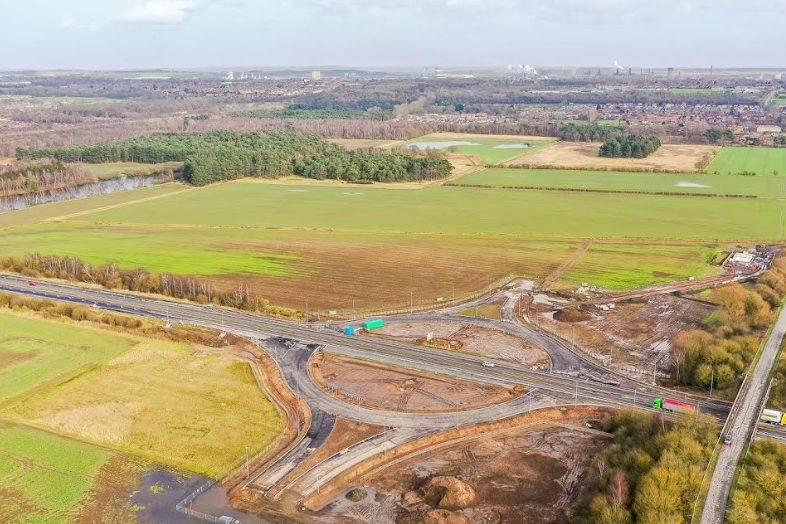Atmospheric spin cycle repeating cool, damp weather

Want to be the first to see weather news? Sign up for our weekly email weather newsletter, featuring weather journalist Kevin Myatt.
We’ve all had those times when we feel like our wheels are spinning.
The atmospheric pattern over the eastern U.S. has been spinning a wheel the last several days and may get another wheel stuck early next week, repeating the cool, damp weather we’ve been having early this week.
In between, there will be a few days — Thursday, Friday and probably most of Saturday — that actually seem like early June, with more sunshine and highs pushing well into the 80s in most of Southwest and Southside Virginia.
The Memorial Day weekend weather — much to the chagrin of lake goers but to the pleasure of some gardeners — was dominated by a stubborn upper-level low west of our region and for a time by a strong surface low along the coast of the Carolinas.
It took most of Saturday and Sunday for the circulation off the Atlantic Ocean to saturate a dry atmosphere, but once it did, some heavy amounts of rain poured over parts of our region, especially south of the U.S. 460 corridor and along and west of the Blue Ridge, on Sunday night and Monday, even enough for some sporadic minor flooding despite prior dryness.
Showers continued to spin through the region at odd angles — east to west, even northeast to southwest — through the rest of Monday into Tuesday and Wednesday as well.
If having a stalled upper-level low in late May continually circulating moisture against the mountains for days sounds familiar, well, the same thing happened at about the same time of year just three years ago.

Compare the weather maps at 500 millibars, or generally three to four miles up, between May 21, 2020 (above), and May 28, 2023 (below), and the similarities are obvious.
· Low pressure centered over the southeast U.S., to the west of Virginia.
· High pressure extending westward from the northern Mid-Atlantic into the Great Lakes, creating a “Rex block” trapping the upper-level low to the south.
· Broad low pressure over the Pacific Northwest and western Canada.
· Low pressure in northeastern Canada, east of Hudson Bay, the upper right part of the map.

Setups for weather events are rarely unique, but more typically a copy or close replica of something that happened before. Analogs — similar or nearly identical patterns of high and low pressure in the past — can often be effective in forecasting weather in the near future.
The low was stronger and even more stuck in 2020, resulting in a constant flow of steady moisture over our region for four days, with some 8 to 12 inch amounts along the Blue Ridge from Roanoke southward. (See the second section of this column for discussion of rain amounts earliker this week from a shorter, but more intense, burst of rain on much of our region.)
Late spring and early summer 2020 had a propensity for similar cut-off or blocked-in upper-level lows, with three more affecting our region into early July, though none as richly moist as the first one.
This same time period in 2023 could possibly be following suit.
A “backdoor” cold front will slide south-southwest from New England over our region by late Saturday or early Sunday, dropping temperatures back to the cooler-than-normal range in the 50s and 60s, some lower to mid 70s if there is partial sun some afternoons.
There are some indications another upper-level low may develop over or near our region and spin out some more damp weather, though it may not be positioned in the same manner for as much of a moist flow as happened Sunday night and early Monday.
The general weather pattern over North America is “blocky” right now with high pressure expected to build back over the Pacific Northwest into western Canada and also continuing over the North Pole and Greenland, which leads to deep dives in the jet stream southward and occasionally stubborn upper-level lows with cool, damp conditions trapped under them.
That will probably keep any long runs of summerlike weather from developing for our region anytime soon. Whether that’s a good thing or not depends on your personal view of summer heat.

Rainfall totals
As the map above from the National Weather Service’s office in Blacksburg shows, there was a sharp line across our region between occasionally torrential downpours and just a series of showery periods.
The areas in yellow and red were within a fetch of deeply moist air pulled in from the ocean late Sunday into early Monday, circulated both by the weakening coastal low that had moved far inland over North Carolina, and the upper-level low spinning higher up to the west.
For a time, upper-level and surface flow moved more in unison from the east to southeast, whereas earlier, surface flow had been more from the northeast, bringing in dry but cool ari at the surface, while upper-air flow was transporting moisture over it from the southeast.
As is typical in similar east to southeast flow setups, moisture was lifted up and over the higher terrain and heavier amounts of rain occurred generally from the Blue Ridge west.

Some of the southwestern tip of Virginia was excluded from the heavier rain, having already been wrung out farther east. Not far east, though, some of the worst flooding occurred near Bluefield, West Virginia, where over 5 inches of rain fell.
For a more complete listing of regional rainfall totals, click here.

Heat prediction contest, soft launch
The intention has been to focus a weather column on summer heat while also launching the Cardinal Weather heat prediction contest, but recent weather patterns have not really been moving in the direction of summerlike heat.
We will get back to the subject, but for now, as a bonus to anyone who has read this far, here are the instructions for entering the heat prediction contest, which I will open for entries now and continue until June 18.
The heat prediction contest is simple: Email your name and general location (city, town or county) to [email protected] and then guess the hottest temperature between June 20 and August 31 for ONE location from the list below. It can be the location closest to you, but it doesn’t have to be.
· Abingdon
· Appomattox
· Blacksburg
· Clarksville
· Danville
· Galax
· Lexington
· Lynchburg
· Martinsville
· Roanoke
· Wise
· Wytheville
The list was chosen for geographic spread across our region, utilizing major climate stations and co-op stations with years of reliability for temperature measurement.
The winner will receive a $25 gift card but also, more importantly, notoriety in Cardinal Weather for prognostication prowess.
Next week I’ll follow with specific statistics related to each of these locations, if you want to wait for that to help you decide. But if you want to go ahead and enter a guess for your chosen location, you should know the tiebreaker in the contest if two entries are equally accurate will be whose entry I receive first.
Journalist Kevin Myatt has been writing about weather for 19 years. His weekly column is sponsored by Oakey’s, a family-run, locally-owned funeral home with locations throughout the Roanoke Valley.














